
Put political pique aside by considering Thanksgiving’s origins (Opinion)
Throughout America’s history, Thanksgiving has been celebrated in times of difficulty and dissension. People from diverse walks of life eat together with appreciation for the food and for each other
Columnists
The Denver Post editorial board opposes the ban on mountain lion, lynx and bobcat hunting
Coloradans are being asked to ban mountain lion hunting and the hunting and trapping of bobcats and the endangered lynx should the animal ever get delisted.
Endorsements
Put political pique aside by considering Thanksgiving’s origins (Opinion)
Throughout America’s history, Thanksgiving has been celebrated in times of difficulty and dissension. People from diverse walks of life eat together with appreciation for the food and for each other. This Thursday should be no different. Believe it or not, the first Thanksgiving meal held […]
Columnists

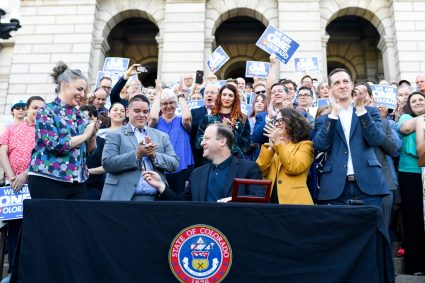
Fighting Colorado’s ban on ‘conversion therapy’ for the free speech I need and my clients deserve in my office (Opinion)
On Oct. 7, I walked into the U.S. Supreme Court, not because I ever imagined myself there, but because I love the kids and families who sit across from me in my counseling office. I’m a licensed professional counselor in Colorado. My calling is simple: […]
ColumnistsOn Oct. 7, I walked into the U.S. Supreme Court, not because I ever imagined myself there, but because I love the kids and families who sit across from me in my counseling office.
I’m a licensed professional counselor in Colorado. My calling is simple: to listen with compassion to my clients and to walk with them through their struggles. Some of the kids I have met are carrying heavy questions about who they are. They’re confused, hurting, and longing for someone to hear them out. Many just want help making peace with the bodies God gave them.
But Colorado has interfered in those discussions. In 2019, the state passed a law that censors me from saying certain things to my clients. If a teenage girl who started identifying as a boy tells me, “I want to learn to be comfortable in my body and try to live as a girl again,” I am legally forbidden from helping with that goal. Yet if that same child says, “I want to reject my body and continue living as a boy,” the law allows me to encourage that path. The government has picked sides. And if I don’t comply, I risk thousands of dollars in fines, suspension, and even the loss of my license.
That reality is devastating to me, because the very reason I became a counselor was to create a safe space where people could be honest, share their deepest questions, and sort through their struggles without fear of judgment. Counseling isn’t about pushing an agenda; it’s about offering the care a client is asking for. It’s about trust. It’s about choice.
When I counsel minors on these issues, it’s always voluntary. No one is forced into my office. The kids who have asked me for help are motivated–often desperate—to find clarity and comfort. Some are working through identity questions, others are wrestling with family relationships, and still others are navigating feelings of isolation or shame. What they all have in common is a desire for someone to listen and to walk alongside them.
Yet, under Colorado’s law, I can’t help certain kids because the state doesn’t agree with their counseling goal to realign with their biological sex. Colorado’s law tells struggling kids that they don’t get that choice. It tells families–struggling young people and the parents who love them—that they cannot pursue the help they together believe is best. And it tells counselors like me that we cannot respond to our clients’ questions unless we parrot a government-approved viewpoint.
That breaks my heart because kids deserve better. They deserve open, honest counseling conversations. They deserve the freedom to set their own goals for counseling and to pursue the futures they want–not the ones the state dictates.
I’ve listened to those who regret being pushed too quickly into medical interventions. Many say they wish someone had slowed down, asked better questions, and helped them find peace in their own bodies. The law in Colorado allows discussions that push young people toward these medical interventions, but it threatens the license of any counselor who would help them pursue the opposite path. That’s not compassion. That’s censorship.
The case I chose to file through my attorneys with Alliance Defending Freedom over that censorship, Chiles v. Salazar, is about freedom–freedom for families to choose the counselor they trust, freedom for kids to set the goals they believe will bring them peace, and freedom for counselors like me to offer help without fear of government punishment.
I’m standing before the Supreme Court because kids are hurting, parents are being sidelined, and counselors are being silenced. I couldn’t look at my clients and do nothing. My prayer is that the justices will protect the freedom to have these conversations–because every child deserves the chance to hear words of truth, hope, and healing from someone who cares.
Kaley Chiles is a licensed professional counselor in Colorado Springs.
Sign up for Sound Off to get a weekly roundup of our columns, editorials and more.
To send a letter to the editor about this article, submit online or check out our guidelines for how to submit by email or mail.

Our shared humanity is the path to peace in Gaza (Opinion)
For 730 days, I’ve watched the world reach for simple answers to something that defies explanation. Two years have passed since Hamas terrorists murdered 1,195 people and took 251 more as hostages. The October 7 attack tore open a wound that runs deep in the […]
ColumnistsFor 730 days, I’ve watched the world reach for simple answers to something that defies explanation. Two years have passed since Hamas terrorists murdered 1,195 people and took 251 more as hostages.
The October 7 attack tore open a wound that runs deep in the Jewish heart, shaped by generations who have known persecution and fear. That dark day set off a wave of loss and destruction that continues to consume lives in Israel, Gaza, and across the Middle East. To speak of the October 7 attack and of Hamas only in passing, as if they were incidental to the tragedy that followed, is to turn away from the hard truth of what began that day and the vast suffering it set in motion.
Those of us who care about peace have an obligation to speak with honesty and humility. We must engage openly with everyone’s trauma and be willing to hold complexity rather than reduce it. Our energy is better spent wrestling with that complexity — and seeking ways through it — than debating which legal definition best fits this tragedy.
In that spirit, I feel compelled to find words that open hearts rather than harden them. I hope this piece helps each reader look beyond the slogans and simple stories we’ve all been handed. For some, it might mean facing the sheer cruelty of the October 7 attack and remembering that nearly fifty hostages remain in Gaza. For others, it could mean confronting the reality that Hamas steals food and medicine, using innocent Palestinians as human shields to prolong suffering and generate international pressure on Israel. And for some, it may be acknowledging the staggering rise in antisemitism since that day. Whatever it is, I hope something here reaches you.
Earlier this year, I joined a delegation of Colorado civic leaders to Israel. We visited the site of the Nova music festival to bear witness to the massacre that took place there. I recited the Mourner’s Kaddish and felt a profound connection to those lost — including several with deep ties to Colorado. I was moved to tears when a pastor traveling with us offered a prayer for mourning and healing. His words reminded me that grief itself is not a political act. To mourn those lives is not to take a side; it is to recognize our shared humanity.
Yet too many, on both sides of this tragedy, extend that humanity to only one group of victims. Here in Colorado, on the second anniversary of the attack, rallies at the Tabor Center are “honoring our martyrs” and claiming that Hamas fighters who raped and murdered Israelis were engaged in “brave resistance.”
At CU Boulder, fliers for an event the same day declare that “decolonization is always a violent phenomenon,” then add, “glory to our martyrs and victory to the resistance.” Those words matter. Their echoes are chillingly familiar — Hamas itself marked this anniversary by celebrating October 7 as “a glorious day” and “a major turning point.”
That so many self-proclaimed pro-Palestine activists now condemn the U.S. proposal to immediately end the war–and, in some cases, even urge Hamas to reject it — raises two painful possibilities. Either they were never truly committed to peace, or they have decided that the suffering of Palestinian civilians is more useful as a weapon against Israel than as a reason to stop the fighting.
The Jewish community, despite claims to the contrary, knows that criticizing Israel is not inherently antisemitic. Israel’s own citizens protest their government daily, demanding change and accountability. But dismissing the rise in antisemitism as mere policing of speech about Israel is disingenuous and dangerous. Stabbing Jews in a synagogue in the U.K. is antisemitism. Throwing Molotov cocktails at demonstrators calling for the release of hostages in Boulder is antisemitism. The surge in this hatred is real, and we don’t need to parse “borderline” cases to see it.
We are working toward a moment of possibility. A fragile but genuine chance to build peace out of pain. My hope is that more of us will choose to come along. Because the only path forward — for Israelis, Palestinians, and all of us watching — is to remember that empathy is not a finite resource. It is the foundation on which peace must be built.
Sen. Dafna Michaelson Jenet is a state lawmaker who is Jewish.
Sign up for Sound Off to get a weekly roundup of our columns, editorials and more.
To send a letter to the editor about this article, submit online or check out our guidelines for how to submit by email or mail.

Don’t overlook Hamas’ role in the destruction of Gaza (Letters)
Don’t overlook Hamas’ role in the destruction of Gaza Re: “The genocide has lasted for 2 years, Americans must speak for Palestinians,” Oct. 5 commentary This is in response to the editorial essay written by Rep. Iman Jodeh. In the essay, there is one sentence […]
LettersDon’t overlook Hamas’ role in the destruction of Gaza
Re: “The genocide has lasted for 2 years, Americans must speak for Palestinians,” Oct. 5 commentary
This is in response to the editorial essay written by Rep. Iman Jodeh. In the essay, there is one sentence devoted to the Oct. 7, 2023, atrocity that occurred in Israel at the hands of Hamas and the Palestinians. The rest of the essay is devoted to the humanitarian crisis in Gaza as a result of that event.
Unfortunately, Rep. Jodeh does not care to remind people of the decades of incursions, murders, and outright documented desire to destroy Israel by the Palestinians. May I remind Iman Jodeh of the murders of innocent Olympians in Munich, ongoing missile attacks on civilian targets in Israel, and the documented desire to kill Jews and destroy Israel in textbooks and other documentation.
Hamas was an elected Palestinian organization and Hamas is recognized as a terrorist organization across the world. Here is a formula for Palestine to follow to end the events in Gaza and move to a more secure state. First, recognize Israel as a sovereign nation. Second, disassociate from Hamas and other terrorist groups, including Iran, lay down all arms, and come to the table with a plan to live in harmony with Israel.
Until then, the Palestinians continue to dig their own grave as a result of the decades-old philosophy of viewing Israel as an enemy and the desire to exterminate every Jew and the state of Israel.
Greg Wells, Fort Collins
I read the Sunday Denver Post article by Rep. Jodeh regarding the genocide in Gaza. I am appalled by the statistics she quotes; however, I noticed one very interesting fact. Nowhere in the article does she mention Hamas‘ role in the genocide. Is it possible that Hamas might be genocidal as well? Is it possible that Hamas is using children as shields? Is it possible Hamas is the one doing the murdering as an excuse to blame Israel?
Michael Zelman, Aurora
I simply wish to thank Iman Jodeh for the clarity and challenge of her essay on Gaza in Sunday’s Post, and to urge readers to (re)read her words and take them to heart as well as mind.
John F. Kane, Denver
Editor’s note: Kane is Emeritus Professor of Religious Studies, Regis University
Evergreen will never be the same, and neither will school
Wednesday, Sept. 10.
Teachers were teaching, students half-asleep, unaware that today would be the last normal day of school for the rest of our lives.
At lunch, high schoolers were eating, middle schoolers were playing outside. A gunshot.
My sister, trapped in a dark room, texting our family her goodbyes, not knowing if she’d survive.
The middle school, a stampede.
Puddles of tears flood the halls.
Nobody knew if our loved ones at Evergreen High School were safe.
This dark moment in Evergreen will last forever.
The silence afterward was painful. Nobody was OK. Why does this keep happening in our schools.
Olivia Thomas, Evergreen
Editor’s note: Thomas is an 8th grade student at Evergreen Middle School.
Demand that the people’s house protect democracy
Re: “Nazi Germany expert assesses Trump’s actions,” Sept. 5 commentary
Sunday’s piece on fascism/authoritarianism and President Trump did a very good job at analyzing where American democracy is on the democracy-authoritarianism continuum. It was particularly good in the use of a historian to describe the actions we have seen from Washington in the time since January 20. However, it left one asking for the “rest of the story” as one radio entertainer used to say. Simply put, it left the reader with too many “not yets” and “to this point.” Here is the rest of this story.
Everything said or done has meaning only in the context in which it is accomplished: context, context, context. Hitler used hatred of Jews as a fulcrum around which to gain full and absolute control of his countrymen. Trump and his apparatchiks use hatred of all and any idea he chooses to call “woke,” our many-sided culture, as his stalking horse. His administration even uses the term “unitary president” as the label for his quest for absolute and complete control and unlimited discretion. Every day he arrogates unto himself more power that belongs to the people, not the person we chose to faithfully execute the law.
Only full-throated peaceful protests from the people will awaken the House of Representatives (the people’s house) to save our democracy. If we wait until we individually feel the pinch, it will be too late.
Wally Brauer, Denver
Congress needs to step up and keep the peace
Peace starts in the Congress of the United States of America.
There are over 17 million living veterans in the United States. We have served this country, sometimes with pride and sometimes with shame. We sought to keep others, both foreign and domestic, safe and free from tyranny. Presidential use of the military was meant to be endorsed by the Congress of the United States.
Our president does not respect that view. We are now civilians, and political powers seek to alter the meaning of the Constitution and the military obligation to its calling. The U.S. military is not to be engaged in domestic affairs. It is the outside threat that you respond to, and not your own brothers and sisters.
I suggest that veterans across America write an active-duty soldier, sailor, or air force enlistee. Tell them how you feel about becoming a target instead of an affirmed defender of this country. Those who served as winners in the military are almost extinct. That means that veterans from today have fought in vain to defend the Constitution, which is now being soiled by corruption and dishonor.
We have sacrificed to an ideal and now that ideal is being spat on and ground into the earth. Let us not let the present leadership turn our hearts against each other. Will the U.S. military raise their weapons against civilians, or will they lower their weapons and let Congress use dialog instead? The behavior of the current Commander-in-Chief is an abuse of his power. The shock from the officers at the summit in Virginia a few days ago supports these comments.
Bob Grimes, Windsor
Editor’s note: Grimes is a veteran of the Vietnam War.
It’s not the schools that are failing the kids
Re: “DPS test scores confirm persistent inequalities,” Sept. 20 commentary
As a high school teacher of 27 years, I am continually blindsided by opinion pieces that want to assert that our schools are failing us. Why are you, Federico Peña and Rob Stein, carrying the mantle of the MAGA movement? When you promote the idea that schools are failing us, that’s exactly what you are doing. You are playing right into their hands.
Where in their opinion piece are facts about schools being underfunded for 40 years in Colorado? Where do they talk about the socioeconomic status of the students they are comparing? Do you think that students from wealthier families have more opportunities? Do you think that students from poorer families struggle more? How well can you do in school if you are hungry or if you’re worried about your family’s future and ability to pay for rent, food, and basic needs?
Life is not fair and people want to act like schools are the great equalizer. Well, they aren’t. Teachers cannot solve poverty! No matter how much we try to treat students equitably, what happens in their lives outside of our classroom is out of our control.
So stop gaslighting and confront the true crux of the problem: a propaganda machine created by Republicans to gain control of public education. Years of forcing charter schools into existence by constantly chanting “ schools are failing us.” They are doing what they do so well – constant repetition of a lie makes it true.
So no, our schools aren’t failing our kids; our leaders are failing our kids.
Melissa Bradford, Denver
Sign up for Sound Off to get a weekly roundup of our columns, editorials and more.
To send a letter to the editor about this article, submit online or check out our guidelines for how to submit by email or mail.
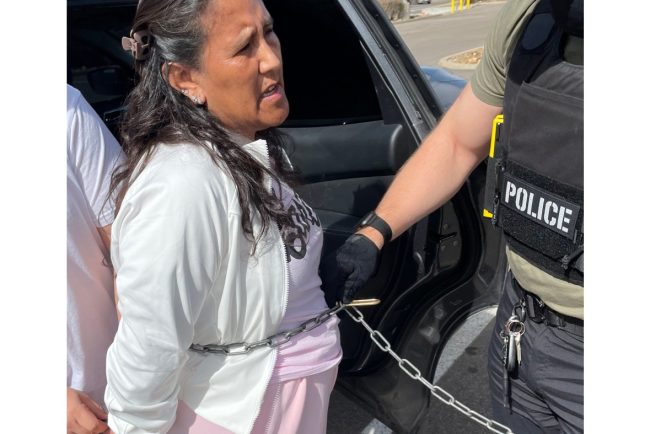
Release immigration activist Jeanette Vizguerra from ICE detention (Letters)
Release Vizguerra Re: “Detained activist says that she feels ‘vulnerable’ six months after arrest,” Sept. 30 news story Jeanette Vizguerra, an activist detained by ICE for 6 months, should be released immediately. She is a working mother who paid taxes supporting the government at the […]
LettersRelease Vizguerra
Re: “Detained activist says that she feels ‘vulnerable’ six months after arrest,” Sept. 30 news story
Jeanette Vizguerra, an activist detained by ICE for 6 months, should be released immediately. She is a working mother who paid taxes supporting the government at the time of her detention. Being held, she is costing the government and taxpayers money.
D.T. Dodson, Denver
Shutdowns demonstrate wrong priorities
So, let me understand: We are continuing to pay members of Congress, but not air traffic controllers and active-duty military members? Our priorities are turned upside down. Can anyone govern in America?
Scott Bridgford, Highlands Ranch
The political shutdown of the federal government is nothing new, but no less of a disgrace. It goes beyond just hurting the economy. Shutting down the government should be illegal. The first expenses cut should be with Congress, the president, and high-level political appointees. They are probably not concerned about mortgage payments or health insurance.
Using government as a political whipping post is a libertarian ideal for some, but to disregard the impact on people’s lives is unconscionable. Republicans can stop pretending to be standing up for the interests of common people. They are doing what they do best, and that is advocating for trickle-down economics under a false flag of patriotism.
The reasoning that “waste, fraud and abuse” only occurs in government is not factual, patriotic or justified. There is no excuse to subordinate public safety and the general welfare to a political ideology. The American standard of living for the middle class defines us, but the wealth gap between the rich and poor could destroy us, and democracy is at the crossroads.
I certainly understand why most Democrats opposed the budget, but too many of them, past and present, also supported Taft-Hartley laws to appease private enterprise with legislation like the Railway Labor Act and right-to-work laws. They broke rank to protect power and profit. They have us fighting a culture war to stop us from fighting a class war. Let’s hope the next president signs legislation to outlaw government shutdowns and pass the pro-act.
Timothy D. Allport, Arvada
Denying climate change, history doesn’t make it so
Re: “EPA may stop collecting data from polluters,” Sept. 13 news story
Mother Nature doesn’t care who won the last election. Climate change denials stop neither flood nor fire. Hurricanes fueled by heated seas will crash ashore despite any executive order. Cutting FEMA funding just makes suffering worse.
Killing clean energy credits does not stop progress; it just gives it to the Chinese.
Halting the agriculture department from tracking hunger feeds no one.
Disparaging vaccines does harm now. Canceling cancer research kills later.
Presidential pronouncements can’t change history. Removing slavery’s sins from museums or history books unbeats no slave nor unlynches one runaway. A broken treaty is not honored by its denial.
Donald Trump was elected to the most powerful office, but his pen doesn’t change reality.
H. H. Cochran, Centennial
Sign up for Sound Off to get a weekly roundup of our columns, editorials and more.
To send a letter to the editor about this article, submit online or check out our guidelines for how to submit by email or mail.
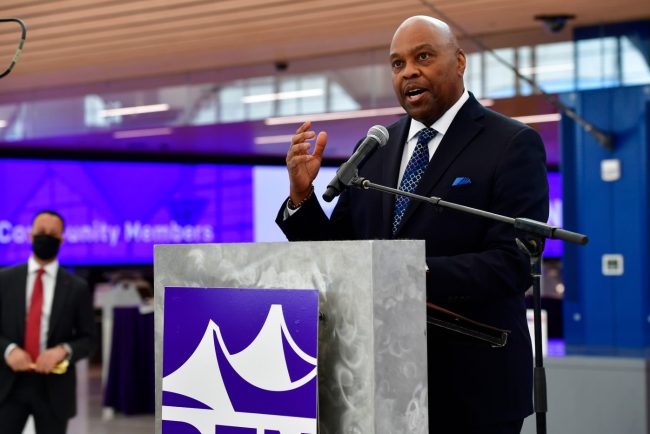
DIA executives paid more to fly to Spain than some luxury travel options for the ultra-wealthy (Editorial)
Regardless of the ethics board’s “technical” conclusion this week, Denver residents know that it is unethical for a public employee to spend $19,200 on a ticket to Spain and back to Denver even if it is for an important work-related conference. Denver International Airport’s CEO […]
OpinionRegardless of the ethics board’s “technical” conclusion this week, Denver residents know that it is unethical for a public employee to spend $19,200 on a ticket to Spain and back to Denver even if it is for an important work-related conference.
Denver International Airport’s CEO Phil Washington was wrong to allow himself and eight other executives to fly to Madrid in first-class and business class seats that cost an average of $12,000 per person. The final cost of the travel was $108,989, enough to hire another mid-level employee to help run one of the world’s busiest airports.
We found first-class tickets directly to Spain in April of this year for around $7,000. Yes, ticket prices fluctuate, but if prices are at a record peak, the not-too-difficult decision must be made to fly coach, or to add in a layover, or to skip this year’s annual conference. We would expect our leaders at DIA to at least know how to book travel at a reasonable price.
When does expensive travel cross over from a bad business decision to an ethical lapse?
For example, it is not unethical for the owner of a private and prosperous company to spend $15,000 from the business coffers to book “The Residence” on Etihad Airlines.
If a business, however, is about to declare bankruptcy and owes debts that need to be paid, it would be highly unethical for the CEO to pay the roughly $8,700 to fly La Première, what is described as a “private suite” on Air France from Denver to Paris this month, using what essentially is other people’s money at that point.
And for employees of a public entity – like the Denver International Airport – there is a higher standard, an expectation of frugality.
Denver airport officials’ salaries are paid for by fees and taxes on airlines, which are passed directly or indirectly on to the ticket prices for passengers. The more efficient operations at DIA are, the lower the fees on airlines are, and the savings, in theory, will get passed on to users. The end goal for employees at DIA is to serve the traveling public. They are not trying to make a profit so much as raise only the money necessary to serve the public effectively and efficiently. Every dollar misspent on luxury travel accommodations is a dollar that could remain with an airline or with a passenger. These dollars are not fungible.
CBS Colorado reporter Brian Maass did good work tracking down the public records that showed the cost of these flights, and we are glad someone reported the expenses directly to Denver’s Ethics Commission for review.
But we don’t want the decision that the lavish spending did not violate the city’s ethics policy to muddy the waters.
This behavior is not acceptable for our public officials.
We understand that travel is a business perk often used to entice high-level employees to a company, like the chief operating officer who took the most expensive flight on this trip to Madrid for the Annual Passenger Terminal Expo. But there has got to be a limit on the perk, and clearly the city’s travel policy – that costs be “reasonable” – is not strong enough. It is apparent to all Coloradans that an almost $20,000 flight is not reasonable. In fact, we would call that price – prohibitive. The answer should have been “no” to those flights and the city’s policy can be updated so that if the price of travel is astronomically high, either alternatives are sought or the trip is canceled.
While the Denver Ethics Commission adhered to the letter of the ethics policy, we do not want Denver officials – even those in externally funded enterprise ventures – to believe these flights were acceptable expenditures. Clearly, officials at Denver International Airport need to have a cap applied to their travel expenses, and we are guessing officials in other cities and counties in Colorado would benefit from this warning as well. Be prudent with our dollars, or expect dogged journalists such as Maass to expose your lavish travel.
Sign up for Sound Off to get a weekly roundup of our columns, editorials and more.
To send a letter to the editor about this article, submit online or check out our guidelines for how to submit by email or mail.

The genocide in Gaza has killed Palestinians for 2 years, Coloradans must raise their voices (Opinion)
For 730 days, I have watched Palestinians live-stream their own genocide from Gaza to the world. Two years have passed. No matter what we call it, ethnic cleansing, apartheid, genocide, words that once carried the weight of human horror have been ignored, even as the […]
ColumnistsFor 730 days, I have watched Palestinians live-stream their own genocide from Gaza to the world. Two years have passed. No matter what we call it, ethnic cleansing, apartheid, genocide, words that once carried the weight of human horror have been ignored, even as the crimes themselves unfold in plain sight.
But the truth is simpler than any label: we are human beings, never less than, never disposable, entitled to the same recognition, equality, and self-determination that all people deserve.
This is not about semantics. This is not about Hamas. This is not about Benjamin Netanyahu. This is about decades of Palestinians insisting on their right to exist.
Those of us who speak out find ourselves relentlessly searching for some phrase or video that might pierce the willful blindness of people who say, “I don’t want to watch that.”
In that spirit, I feel compelled to search for the one thing that will make you stop and pay attention. I want this piece to help each reader discover what moves them to watch. For some, it might be the sheer scale of the humanitarian crisis. For others, it could be the policy failures. And for some, it may be the testimony of genocide experts who can no longer stay silent. Whatever it is, I hope something here reaches you.
As Palestinians insist on their right to exist, the world sees cruelty that defies imagination. Hospitals turned into death traps. Newborns found decomposing in incubators after doctors were driven out at gunpoint by the Israeli army. A five-year-old boy with no legs, dragging himself across the sand, one hand stuffed inside a rollerblade, the other clawing forward. Families, ethnically cleansed, staggering out of burned homes only with what they can carry on their backs. Overhead, the unrelenting buzz of drones. Around them, the stench of decomposing bodies unrecovered in the rubble because the living are too starved and hunted to dig graves.

Two years ago, the world was shaken by the attack on October 7. What has followed has been nothing short of catastrophic. As of September 2025, Gaza’s death toll is estimated to be nearly 65,000 people. The medical journal The Lancet has estimated more than 64,000 deaths from traumatic injuries alone, which means the actual toll, when famine, untreated illness, and lack of medical care are added, is far higher.
That already rivals or exceeds the death tolls of many recent wars. Ukraine has recorded about 50,000 civilian casualties since 2022. Afghanistan, in its final years, saw deaths in the hundreds. By contrast, Gaza’s losses are overwhelmingly civilian, tens of thousands of children, parents, doctors, teachers, journalists, making it one of the deadliest conflicts of our time.
This is not a battlefield; it is the obliteration of an entire territory, deemed “uninhabitable” by the United Nations’ undersecretary for humanitarian affairs. Whole sectors of Gaza, between 78% and 95%, are damaged or destroyed.
Doctors inside Gaza tell stories that defy comprehension. One British surgeon, returning from Gaza, described to National Public Radio’s Morning Edition what he called “systematic cluster injuries.” One day, bullet wounds were concentrated in heads, the next in abdomens, the next in groins, as if civilians, even children, were being used for target practice. Some were shot while standing in line for food. Mothers in labor have been shot in the stomach, and fertility clinics bombed. The human toll is staggering.
The United Nations reports that Gaza now has the highest rate of child amputees per capita of any conflict in modern history. Many have undergone amputations without anesthesia or even care from a doctor because Gaza’s medical system has been deliberately decimated. These deliberate attacks on civilians strip children of their future, mobility, and dignity.
Starvation is claiming lives with equal brutality. Babies, starving and skeletal, breathe weakly, translucent skin, stretched thin over bone, eyes empty, silently pleading for the nourishment that never comes. ABC News reported that 27 people died of hunger in just three days. In total, at least 113 Palestinians, 81 of them children, have died of famine and malnutrition. One in four children and pregnant women are malnourished. Cases of severe malnutrition in children under five have tripled in recent weeks. Famine is not an accident. It is a weapon.
Journalists, too, are paying the price. Bearing witness in Gaza has become one of the most dangerous professions in the world. According to the Costs of War project, at least 232 journalists have been killed. That is more than in World War I, World War II, the Vietnam War, the Yugoslav wars, and the Afghanistan War combined.
International law is not vague about this. The 1948 Genocide Convention defines genocide as any one of the following: killing members of a group; causing them serious harm; deliberately inflicting conditions of life calculated to destroy them; preventing births; or forcibly transferring children. It takes only one to qualify. Gaza meets at least four.

Last month, the UN Independent International Commission of Inquiry concluded that Israeli forces are committing genocidal acts and that statements from Israeli officials provide direct evidence of genocidal intent.
Even Holocaust scholars, who for decades resisted overusing the word genocide, now say the label applies.
Daniel Blatman, Professor of Holocaust Studies at the Hebrew University of Jerusalem, said: “I have been engaged in researching the Holocaust for about 40 years. I never imagined in my worst nightmares that the Jewish state would bomb starving children to death.”
Omer Bartov, Dean’s Professor of Holocaust and Genocide Studies at Brown University, wrote that Israel’s actions “can no longer be denied” as genocide. Amos Goldberg, Raz Segal, and Shmuel Lederman have also raised alarms. When the most cautious, expert voices invoke the term, the world should take notice.
The Trump administration’s 20-point “peace plan” reads more like an ultimatum than diplomacy. It envisions a “New Gaza” under the Palestinian Authority, but only after reforms dictated in Washington and Tel Aviv, including abandoning all legal cases against the U.S. and Israel at the ICJ and ICC. And as Axios and Dawn report, Netanyahu revised a draft previously agreed upon by the U.S., Arab, and Muslim states, making it unmistakably clear that Israeli forces will remain in Gaza indefinitely.
In other words, the price of self-rule is surrendering accountability.
What governments refuse to say, the public increasingly does.
A Quinnipiac poll found that half of all U.S. voters, and 77% of Democrats, believe Israel is committing genocide. That’s nearly as many Democrats who identify as pro-choice (83%). Gallup reports that only 32% of Americans approve of Israel’s actions in Gaza, while 60% disapprove. CNN found that since 2017, Democrats have gone from slightly favoring Israel to strongly siding with Palestinians, a 56-point swing. Among younger Democrats, ages 14 to 49, the swing is even more dramatic: more than 70 points. That is not a minor shift. It is a moral earthquake.
And in a twist few predicted, cracks are appearing on the right. Some right-wing politicians, pundits, and activists, once Israel’s staunchest defenders, are now calling the war what it is: genocide. Many frame it in “America First” terms, arguing U.S. resources should not fund endless wars abroad. Their motives may differ, but the effect is the same: the once-solid consensus around unconditional support for Israel is crumbling.
For those who speak out, the default label is often “antisemitic.” But Kenneth Stern, the drafter of the International Holocaust Remembrance Alliance definition, warns that conflating criticism of Israel with antisemitism weakens the fight against genuine hatred and is “weaponized” to silence dissent. Criticizing Israel is no more anti-Jewish than criticizing China is anti-Buddhist or the UK anti-Christian.
Across the globe, Palestine’s legitimacy is gaining recognition. As of last month, 157 of the 193 UN member states, more than three-quarters of the world, have formally recognized the State of Palestine. Recognition is no longer symbolic or fringe; it is the stance of the overwhelming global majority.
And yet, in April 2024, the U.S. vetoed a UN Security Council resolution that would have advanced Palestine to full UN membership. The General Assembly is ready. The world is ready. Only Washington and a handful of allies stand in the way.
So why are those bodies still lying in the rubble? Why do newborns decompose in their incubators? Why must a five-year-old crawl on the ground with a rollerblade for a leg?
Because the world looks away, paralyzed by fear, profit, and power, and leaders enable genocide with their votes, too afraid of donors or elections to name the crime, even as Gaza buries its children.
Suppose legal accountability, moral clarity, and global awakening converge. In that case, these years may not only mark the darkest of times but also the beginning of a breakthrough, not just for Gaza, but for the integrity of international law and the conscience of humanity.
Sen. Iman Jodeh is a Colorado state lawmaker who is Palestinian.
Sign up for Sound Off to get a weekly roundup of our columns, editorials and more.
To send a letter to the editor about this article, submit online or check out our guidelines for how to submit by email or mail.
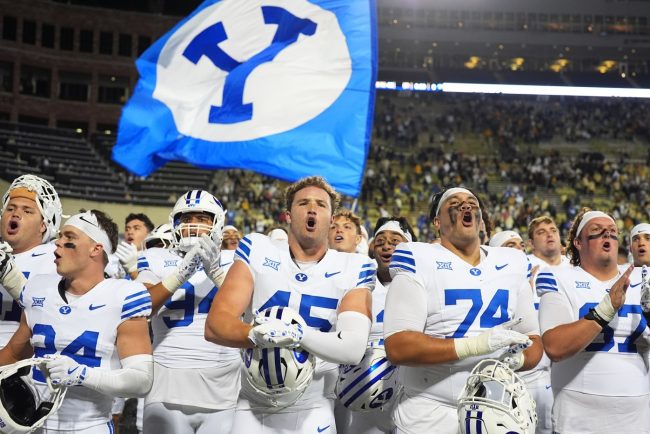
Abusive sports fans make for ugly weekend in Boulder (Letters)
BYU game: CU needs a Civility 101 course I took my two BYU-bound teenagers, ages 13 and 16, to the Colorado/BYU game on Saturday night, and I was shocked by the lack of civility of CU fans. Fans shouted directly at us “(expletive) BYU” dozens […]
LettersBYU game: CU needs a Civility 101 course
I took my two BYU-bound teenagers, ages 13 and 16, to the Colorado/BYU game on Saturday night, and I was shocked by the lack of civility of CU fans.
Fans shouted directly at us “(expletive) BYU” dozens of times, women on the streets of Boulder flashed my son, Mormon-themed jokes were shouted, and the entire student section repeatedly chanted the same unoriginal “(expletive) BYU” phrase throughout the game, even when a BYU player was injured and down on the field.
I’ve no doubt that CU fans would be treated differently and more respectfully in Provo, Utah. Saturday night was an embarrassment to the CU organization.
Perhaps it’s time for CU to implement a Civility 101 course.
Scott Palmer, Parker
I’m appalled that the game was allowed to continue despite the fans yelling hateful insults at the opposing BYU team. In the future, if this occurs again, I suggest that CU and Coach Prime pause the game and announce that the game will be forfeited if the fans continue. And apologize. Hateful behavior cannot be tolerated.
Kelly Roberts, Denver
Golf crowd’s abusive behavior should end the Ryder Cup
Re: “Europe takes a record lead into Sunday singles matches,” Sept. 28 sports story
After watching the New York debacle, it is clear that the Ryder Cup should permanently end today. I’m not about the lack of competition by the American team, but the conduct of the U.S. crowd. The PGA of America has allowed this. It has apparently learned nothing from outrageous behavior at the Waste Management Phoenix Open, which is spreading to other PGA events.
Saturday’s round was despicable. Forget limiting alcohol and having volunteers hold up their hands trying to quiet drunks and (jerks). Also, forget having uniformed and plain-clothed security forces follow the foreign players. These days, the Cup does nothing but make millions for the PGA of America and the networks and cast shame on the great game of golf. Cancel the Ryder Cup now … forever.
I challenge The Denver Post to spread the word.
William Allen, Denver
Can the Rockies keep losses to double-digits next season?
Re: “Woeful Colorado blanked in season finale for 119th loss,” Sept. 29 sports story
The Rockies players had to be told that losing 119 games, over 100 three years running, is “unacceptable”? I think I see the problem. They weren’t out there to provide batting practice for the rest of MLB or an amusing highlight reel of fielding errors; they were actually expected to compete, to demonstrate that they wanted – needed – to win.
The long climb to respectability begins next season. Come on, guys, let’s at least vow to keep losses in mere double digits in 2026 as a start.
Harry Puncec, Lakewood
ICE recruitment ads don’t tell the whole story
I watched NFL football commercials in horror this past weekend when I saw ICE recruitment ads repeatedly misstate that patriotic ICE agents take drug dealers, predators, and gang members off our streets. Actually they criminalize vulnerable immigrants, violate their rights, and mistreat them. They too often take people who follow immigration laws and those who pick our fruit, build our houses, and care for elderly Americans.
Awash in money that has previously paid for Americans’ health care, the ads offer bonuses, loan forgiveness, and other benefits. All you have to do is abuse poor people and leave your conscience at home. Doing this “work” with an unmarked identity and a masked face is disgusting and un-American. Anyone who does this should feel shame.
I ask that all Colorado residents resist such inhumane jobs. Don’t work for ICE!
Bill J. Fyfe, Denver
Sign up for Sound Off to get a weekly roundup of our columns, editorials and more.
To send a letter to the editor about this article, submit online or check out our guidelines for how to submit by email or mail.
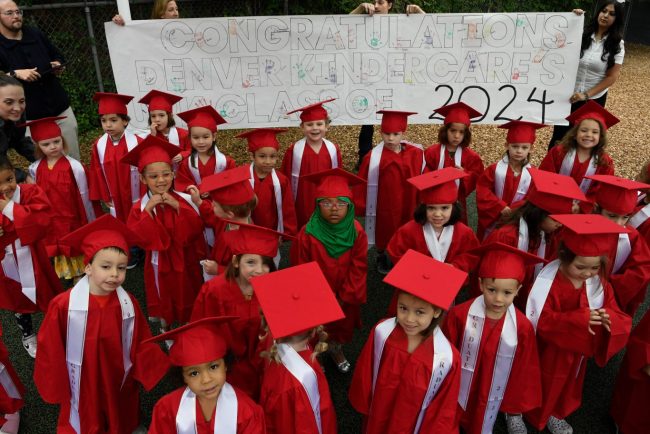
Federal court ruling is a chance for Catholic preschools to open their doors to all children (Editorial)
Archbishop Samuel J. Aquila has an incredible opportunity to recommit to serving all of God’s children in the Catholic schools under the umbrella of the Archdiocese of Denver. On Oct. 1, a federal appeals court told two Catholic preschools in the Denver diocese that they […]
OpinionArchbishop Samuel J. Aquila has an incredible opportunity to recommit to serving all of God’s children in the Catholic schools under the umbrella of the Archdiocese of Denver.
On Oct. 1, a federal appeals court told two Catholic preschools in the Denver diocese that they could not refuse to enroll students because of the students’ sexuality or the sexuality of their parents and still receive state funding.
The ruling is in accordance with long-standing practices – churches can either accept state and federal funding for their education programs or they can discriminate based on sexual orientation, race, disability, military status, gender identity or religion. Private schools cannot do both.
Aquila can choose to appeal the ruling, or he could choose to pull Catholic schools from Colorado’s highly successful universal free preschool program.
But the gracious and kind path forward is to begin enrolling any and every student who seeks admission to a Catholic preschool until the school reaches capacity.
We’d like to remind Aquila and the leaders of St. Mary Catholic Virtue School in Littleton and Wellspring Catholic Academy in Lakewood that every student has a right to an education in this state, and if state dollars are being used in a program, it must be open to everyone. We’d also like to remind them that the love that happens in a student’s home has no impact on other members of the church or other students in the classroom.
In the rare event that a preschool student is already expressing their sexuality or their gender identity in public, those topics rarely, if ever, come up in a preschool setting. If they do, adult teachers are adept at redirecting the conversation to something that is more age-appropriate. Or if the teachers feel compelled to express their religious beliefs on the issue, they are free to do so in a private school, and the parents can then decide if that is the right environment for their child.
We do not buy the accusation in the lawsuit that the universal preschool program is an attack on religious education. In fact, the beauty of the universal preschool program is that it includes religious schools, opening the doors of some of the best schools in the state to low-income and middle-class Coloradans who couldn’t otherwise afford tuition.
We are grateful that Catholic schools want to participate in the state-funded program that covers tuition for a limited number of hours per student. The state will be better for having these excellent schools open to everyone, and we know that some private preschools have chosen not to participate in a program that can be complicated and messy, especially in the chaotic first year of implementation.
In their ruling, the federal judges on the 10th Circuit Court of Appeals found that Colorado’s program “went to great effort to be welcoming and inclusive of faith-based preschools’ participation.”
Colorado’s preschool program does not prohibit schools from teaching religion in their classrooms, which could mean a teacher telling a student that the teacher believes their parents are living a life out of accordance with the teachings in the Bible.
The state learned an important lesson after losing an anti-discrimination case before the U.S. Supreme Court because the justices found evidence that a Christian man had faced hostility based on his religion. Colorado cannot be so zealous in its effort to prevent discrimination that it also discriminates based on religion. A balance must be met, and the universal preschool program has found that balance.
Study after study has shown that American children benefit extraordinarily from quality preschool. Unfortunately, very few states have included pre-school funding in their public schools. Colorado’s universal preschool system, funded by a tax on nicotine products, is groundbreaking and should help our students compete on an international level. Universal free preschool is also essential to help end the stubborn gap in learning that exists between rich and poor students in America.
Catholic schools in this state can step up in an important way to love and educate all children.
Sign up for Sound Off to get a weekly roundup of our columns, editorials and more.
To send a letter to the editor about this article, submit online or check out our guidelines for how to submit by email or mail.
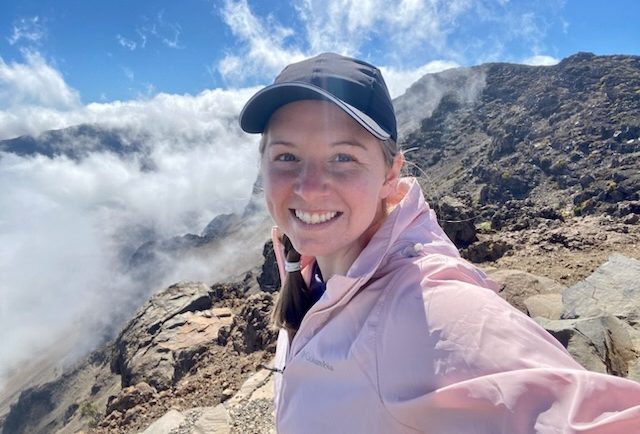
Assisted suicide was offered to my friend Jane Allen. She had an eating disorder. (Opinion)
The big selling point of assisted suicide laws is that they are supposedly compassionate and a progressive step toward enlightened autonomy. But assisted suicide is anything but compassionate for vulnerable people, like the tragic story of my friend with anorexia, Jane Allen, which shows how […]
ColumnistsThe big selling point of assisted suicide laws is that they are supposedly compassionate and a progressive step toward enlightened autonomy. But assisted suicide is anything but compassionate for vulnerable people, like the tragic story of my friend with anorexia, Jane Allen, which shows how assisted suicide laws threaten the lives of the young and curable.
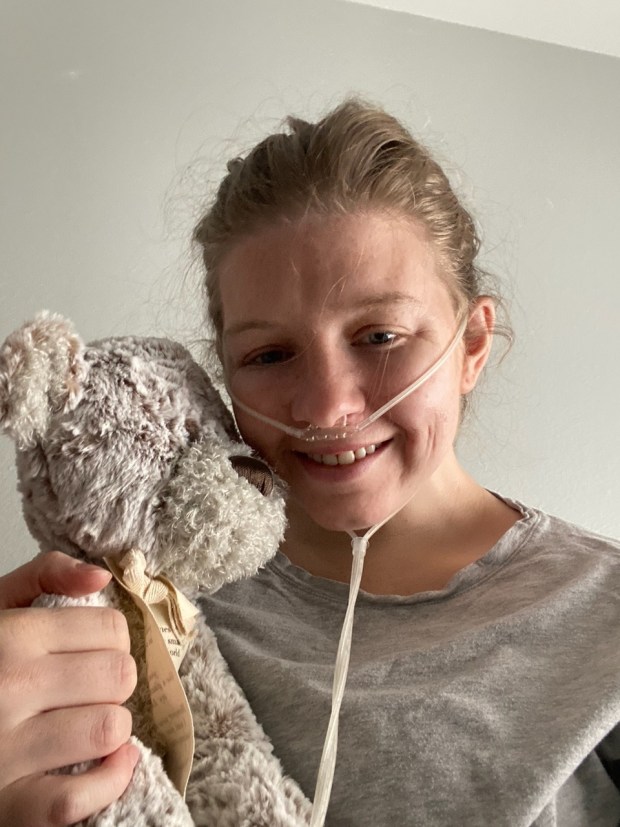
There is a controversial diagnosis circulating called “terminal anorexia,” which is an arrow to the heart of young people with eating disorders who are already experiencing distorted ideas of their worthiness to live. Now, where assisted suicide is legal, they have the state and part of the medical profession telling them they were better off dead.
After struggling with anorexia for most of her life, in 2018, Jane was living in Colorado Springs and getting help for her mental health disabilities, including her eating disorder. She ended up in the care of an exclusive boutique eating disorder practice. She was in and out of hospitals and residential treatment. Jane’s condition resisted treatment, and she ended up receiving a “terminal anorexia” diagnosis.
Jane wrote that her eating disorder doctor, “would ‘make an exception’ for me and ‘allow’ me to die, if that was my choice. It didn’t feel like my choice – I felt coerced and spent an incredibly agonizing months in an assisted living facility.” Jane did not get the lethal prescription directly from her eating disorder doctor; instead, she was referred to another doctor who promptly checked the boxes required under Colorado’s “safeguards,” and saw to it that Jane got the lethal drugs.
Jane’s life was saved at the last minute when her father received a guardianship order from a Colorado judge and was able to have the lethal drugs destroyed. After that, Jane said, “I ate just enough to not die right away. And then I ate more. I weaned off the morphine and all the other hospice drugs that kept me in such a fog. I was getting better, and then I was told that I was too much of a liability and dropped from the [boutique] clinic.”
“I moved from Colorado to Oregon. I have a job that I love, a new puppy, and a great group of friends. I’m able to fuel my body to hike and do the things I love. I’m repairing my relationship with my family, and I have a great therapist who is helping me process all of this. Things obviously aren’t perfect, and I still have hard days. But I also have balance, and flexibility, and a life that is so much more than I was told would ever be possible for me.”
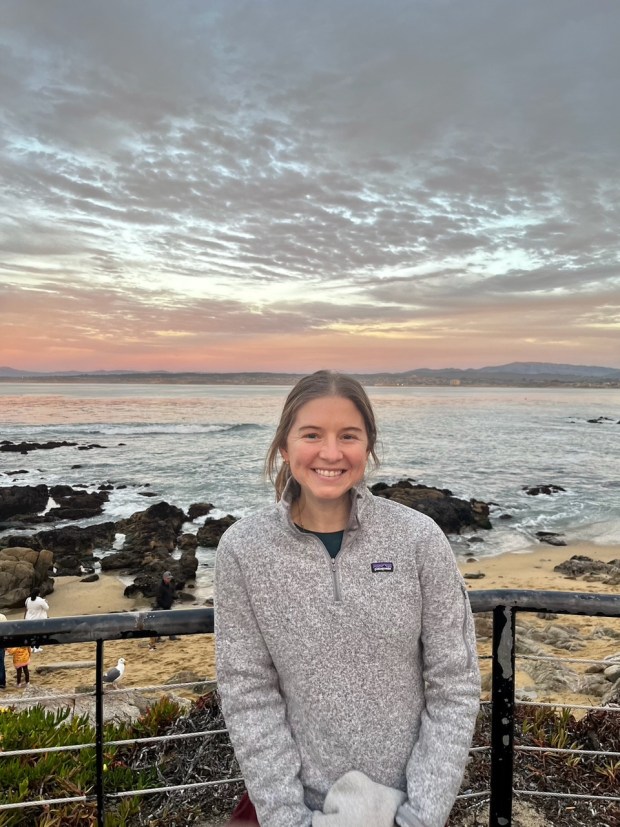
A week before she planned to go public with her story, however, she died suddenly of complications to her health caused by over two decades of starving herself. To this day, I wonder whether the months of treatment lost during Jane’s detour into “terminal anorexia” care worsened her condition, whether she could still be with us today, doing all the good. We’ll never know…
What we do know is that these laws are not so rosy as the propaganda would have you believe. They are as messy as life itself and there has been and will be more collateral damage in people like Jane or Coloradan, Mary Gossman, who was told by a nationally renowned Denver eating disorder treatment facility, “there’s nothing we can do for you,” which qualified her for lethal drugs under the law. She’s in a better place now and has joined as a plaintiff in a lawsuit to overturn the law. So, I ask: how many collateral deaths are acceptable to you? For whatever purported good they do, these laws just aren’t safe.
Matt Vallière is the executive director of the Patient Rights Action Fund and the Institute for Patient Rights both of which advocate against physician assisted suicide policies.
Sign up for Sound Off to get a weekly roundup of our columns, editorials and more.
To send a letter to the editor about this article, submit online or check out our guidelines for how to submit by email or mail.

Trump’s call for military to fight “enemy within” is grounds for impeachment (Letters)
Trump’s address to military — not the American way Re: “Trump’s military speech: Cities as training grounds,” Oct. 1 news story Donald Trump summoned our military leaders to tell them to prepare to do battle with the “enemy within” U.S. cities with Democratic mayors. We […]
LettersTrump’s address to military — not the American way
Re: “Trump’s military speech: Cities as training grounds,” Oct. 1 news story
Donald Trump summoned our military leaders to tell them to prepare to do battle with the “enemy within” U.S. cities with Democratic mayors. We should not be talking about the government shutdown or the administration’s fear of what the Epstein files will reveal. We should be talking about impeaching an unlawful president intent on using American troops against American citizens, simply because Trump doesn’t like them. What more will it take for Congress to act?
Dan Danbom, Denver
In his speech to the military, President Trump asked the generals to applaud his comments if they wished. He then furthered with a “humorous” threat: “If you don’t like what I’m saying, you can leave the room — of course, there goes your rank, there goes your future.”
It appears to me that he is demanding loyalty from the military, another step in his autocracy. It scares me how many of these military leaders will support the president with the removal of our basic civil rights. Freedom of the press is going, freedom of speech is going. How far can this go before the president’s support group wakes up?
AJ Robbins, Denver
It was refreshing to see the reactions of our top military brass from around the world as they listened obediently to Secretary of Defense Pete Hegseth and President Donald Trump. I couldn’t imagine a tougher crowd: trained, experienced, accomplished and highly educated professionals. And they reacted exactly as I hoped they would: polite, attentive and void of emotion, no matter the content of the messages they were forced to hear.
I remain confident that our armed forces will be an additional, even if unofficial, check on sanity and stability within the executive branch.
Steve Eddy, Arvada
The president of the United States threatened me on Tuesday. He threatened the millions of other Americans who voted against him. As he called it, we are the enemy within, American citizens are considered enemies of the state.
Is this the beginning of his military dictatorship? Will our military be used against us even as it breaks the Posse Comitatus Act? How will the military respond? Is this his first step in taking over our elections by using the military? Will Republicans blindly follow him into his dangerous plan or will they finally wake up and put a stop to it?
Nancy Rife, Wheat Ridge
Shutdown: Cooperation should be the answer
Re: “Democrats vote down Republican funding bill,” Oct. 1 news story
So the Republicans control the White House, the Senate, and the House, and are blaming the minority for their inability to keep the government operating? I guess governing by threats and intimidation really doesn’t work. They should try cooperation. Like everything in life, it’s all about give and take. But that is not the maga (small caps) way.
J. Linden Hagan, Lakewood
Danger in a ‘radical climate change agenda’
Re: “Climate change: State lives in crisis, leads the response,” Sept. 27 commentary
Former Gov. Bill Ritter Jr. and climate change fanatics are living a lie if they think all renewables will meet Colorado’s energy needs in the years ahead.
The contrasting reality shows that nations in Europe, such as Germany, are backing off from previous green extreme policies due to prohibitive costs and instability of energy delivery.
President Trump realizes that most Americans are no longer buying into climate change alarmism. His administration’s practical approach is to make use of all sources of energy — oil and gas, wind, solar, hydro, and nuclear — to meet the country’s increasing demand. This will especially be needed with new data centers for AI, projected to use up to 20% of the nation’s electricity by 2030.
If blue states such as Colorado and California continue to stubbornly commit to the radical climate change agenda, they will find themselves in far more economic distress than they have already brought upon themselves with green overkill.
Dave Larison, Longmont
Sign up for Sound Off to get a weekly roundup of our columns, editorials and more.
To send a letter to the editor about this article, submit online or check out our guidelines for how to submit by email or mail.

